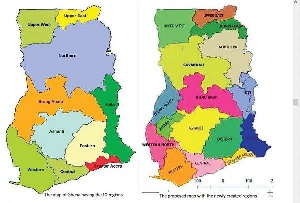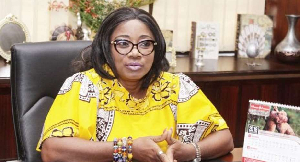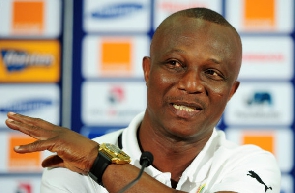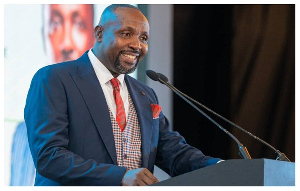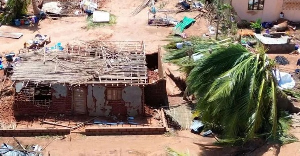With the arrival of newly created regions in Ghana, we can now say Ghana is divided into sixteen Geographical and Political regions which also adds to the history of our beloved country. The modern day Ghana has an ironic history of human diversity, cultural practices and political stories that found their way deep into prominent history books of the world.
The days before Dr. Kwame Nkrumah saw Ghana as Southern and Northern Territories which later saw segregations into the Coastal Belt, the Asante kingdom, the Northern Territories and the British Togoland, the current day Volta region. For dissemination of national resources and decentralization reasons, Ghana was further divided into ten administrative regions with each holding a proportion of Ghana’s population and land size.
Since the final division into ten regions, several ethnic groups and areas have called for another further division to reduce their struggle for development and this was noticeable in Western, Northern and Volta Regions.
Out of these cries, others have benefited as six instead of the anticipated four regions are now created with new capitals. The Northern Region has given birth to Savannah Region with capital as Damongo and North- East Region with capital as Nalerigu. The Brong-Ahafo region also did same as the Northern Region where the Bono-East lead by Techiman and Ahofo region capitalized by Gowso were also caved out it. The last two saw Western and Volta Regions divided to get Western-North and Oti Regions with Sefi-Yosu and Dumbai as capitals respectively.
The creation of regions and districts is predestined by the constitution under article 5 of the 1992 constitution of Ghana, as such it must not be perceived as a one Government agenda. The constitution clearly specifies how and when to create such national demographics hence credit goes to the constitution of the Republic of Ghana and all the Governments after it.
Despite the national success over the creation of the new regions, we cannot be blind to the irregularities that characterized the referenda held on the creation of the new regions and that should be a source of caution to the Electoral Commission (EC) of Ghana since it looks opaque to the numerous claims made by individuals, civil society organizations and other institutions that have interest in our electoral affairs. Since the electoral commission rubbished all the claims said against the conduct of the referenda and went straight to declare the results as free and fair, our image in the international community is depreciating and sinking.
The referenda across the nation was peaceful, free but not fair hence the Electoral Commission of Ghana must be circumspect in the way it handles subsequent elections since we have several important elections from now till the 2020 Presidential and Parliamentary elections where professionalism must be at its highest to have successful elections devoid of electoral irregularities .
The aftermath of choosing regional capitals for the new regions also left Ghanaians in a state of dilemma since it is characterized by vandalism and displeasure in the looks of some communities. A few communities met great disappointments from Government when they were not chosen as regional capitals.
This showed the bent gesture by Government since these issues needed simple dialogue with all major towns in the area to unanimously agree to one community. However, it seems those communities and their leadership were excluded from the dialogue that resulted in the chosen regional capitals.
That notwithstanding, Government has the chance to fairly distribute development to all areas in the regions. In my opinion, some communities were selected over others to allow them to also receive a fair share of national development without looking at what others had at hand while bidding for the regional capitals.
For Governments to develop these newly created regions, it is not the 20 million Ghana cedis seed money that can develop the region but to create an atmosphere for the inhabitants to develop their own regions by improving agriculture, youth development and entrepreneurship in those areas. This will allow for eat what you grow, cutting down excessive importation.
All six newly created regions have potential tourist sites and can be developed to increase income in the region. They all have rich cultural practices that can fetch funds for development and what they need is a pat at the back not promises.
With sixteen regions, we say Ghana is developing hence the impact must be felt.
Long live Ghana, my Mother land
Click to view details



Opinions of Sunday, 17 February 2019
Columnist: Kunsaari A. Enbong





